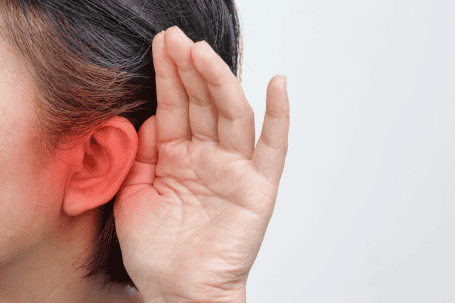Understanding Single-Sided Hearing Loss:-
Single-sided hearing loss can be inherited or can be acquired due to factors like infections, trauma, or medical conditions affecting the ear. This condition leads to numerous challenges because the ability to localize sounds, understand speech in noisy environments, and perceive sound depth is compromised.

Challenges with Single-Sided Hearing Loss:-
Sound Localization:-
Our brain uses input from both ears to accurately determine the source of sounds. However, individuals dealing with single-sided deafness find it challenging to locate the origin of sounds, making them more vulnerable to accidents and potentially missing important auditory cues.
Speech Understanding:-
Hearing in noisy environments somehow becomes very difficult sometimes. The brain relies on input from both ears to filter out background noise and focus on speech. But with single-sided hearing loss, understanding conversations in crowded places can be difficult and frustrating.
Social Interactions:-
Participating in group conversations or following dialogues in group settings can be overwhelming. Individuals might feel left out or struggle to keep up with the conversation due to the inability to hear from the affected side.
Safety Concerns:-
Crossing the street, responding to alarms, and recognizing potential dangers rely on the ability to perceive sounds from all directions. Single-sided hearing loss can put individuals at risk in such situations.
Coping Strategies and Solutions:
While single-sided hearing loss presents challenges, there are several coping strategies and solutions to improve the quality of life for individuals affected by this condition.
Hearing Devices:-
Contralateral Routing of Signals (CROS), Bone Anchored Hearing Aid (BAHA) and Cochlear Implant as a successfully adopted treatment option for single sided cases of Hearing loss can help transmit sound from the impaired side to the functioning ear. These devices enhance sound awareness and speech understanding in various environments. Many leading hearing care brands like Signia, Phonak, Widex, and ReSound manufacture CROS, BiCROS, or Bone Conducted machines that help individuals with single-sided deafness a lot.
Auditory Training:-
Engaging in auditory training exercises can help the brain to adapt to single-sided hearing impairment. These exercises focus on improving speech comprehension, sound localization, and overall auditory awareness.
Communication Strategies:-
Informing friends and family about the condition can lead to better communication dynamics. Asking people to speak, facing the individual when talking, and selecting quiet environments for conversations can improve understanding for individuals with single-sided hearing loss.
Technology and Apps:-
Smartphone apps that provide real-time transcription and captions can help in understanding conversations, particularly in noisy situations.
Advocacy and Education:-
Raising awareness about single-sided hearing loss can help others understand individuals’ challenges. Educating people about how to effectively communicate with someone with this condition can improve social interactions.
